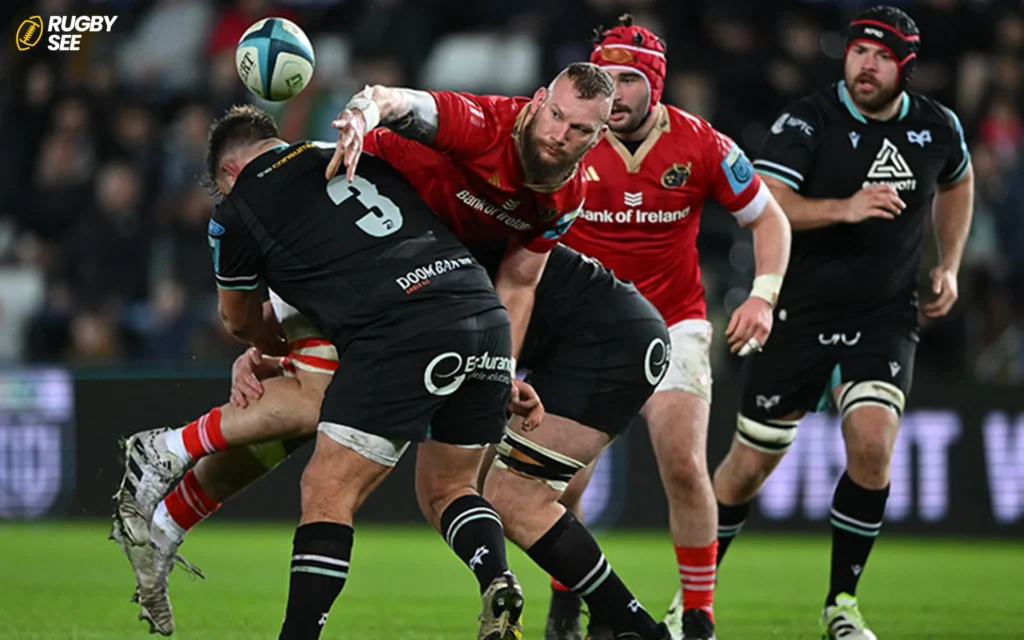When it comes to playing rugby, having the right pair of cleats can significantly enhance your performance and reduce the risk of injury. Rugby cleats, also known as rugby boots, are designed to provide traction, support, and stability on the field, which are essential for the dynamic and often physically demanding nature of the game. If you’re wondering what kind of rugby cleats you should buy, this guide will take you through key considerations, types of cleats, and tips for making the best choice for your rugby needs.
Understanding the Types of Rugby Cleats
Rugby cleats vary depending on the position you play and the type of field you play on. Here’s a breakdown of the main types:
- Forwards vs. Backs Cleats:
- Forwards: Players in positions such as props, locks, and hookers require cleats with excellent traction and durability due to their involvement in scrums. Cleats for forwards typically have eight studs, with six at the front and two at the heel to provide maximum grip.
- Backs: Players such as wings, fullbacks, and fly-halves need cleats that allow for quick movements and agility. These cleats are lighter and have fewer studs, often configured in a 6-stud design to enhance speed and flexibility.
- Soft Ground vs. Hard Ground Cleats:
- Soft Ground (SG): Designed for wet and muddy conditions, SG cleats have longer, removable studs, which help provide better traction in slippery conditions.
- Hard Ground (HG): These are suitable for harder, drier surfaces, and typically feature a larger number of shorter studs. HG cleats often use a combination of blade-shaped and conical studs to offer stability and support.
- Hybrid Cleats: Some modern rugby cleats are designed to be versatile, suitable for various playing conditions. These hybrids often feature a mix of stud types and lengths, allowing for customization based on the field and weather conditions.
Key Features to Consider When Buying Rugby Cleats
- Material: Look for durable materials that can withstand the rough nature of rugby. Leather is popular for its durability and comfort, while synthetic materials offer lightness and are often more water-resistant.
- Stud Material: Metal studs are preferred for soft ground due to their grip and durability, while plastic studs are lighter and better suited for hard or synthetic surfaces.
- Weight: Lighter cleats are beneficial for backs who need speed and maneuverability, whereas forwards might prefer heavier boots for stability in scrums and rucks.
- Fit: Ensure a snug fit to prevent foot movement within the boot, which can lead to blisters and discomfort. Consider any special needs such as wider feet.
- Ankle Support: High-top rugby cleats provide additional support for the ankles and are beneficial if you’re prone to injuries.

How to Choose the Right Rugby Cleats for You
- Consider Your Position: Select cleats based on your role on the team. Forwards should prioritize grip and durability, while backs should focus on speed and flexibility.
- Playing Surface: Determine the typical playing conditions in your area. If you play in wet, muddy conditions, soft ground cleats are a necessity. For drier conditions, consider hard ground or hybrid cleats.
- Personal Comfort and Fit: Try on different brands and models to find which works best for your foot shape and playing style. Comfort should be a priority, as discomfort can distract from your game performance and if you want to know about Powerlifting in Rugby read Is powerlifting good for rugby?
Top Brands and Models
When selecting rugby cleats, consider reputable brands known for quality and performance. Some top choices include:
- Adidas: Known for the Predator and Kakari lines, offering both SG and HG options with excellent durability and performance.
- Nike: Offers innovative designs like the Tiempo and Mercurial lines, which are popular among backs for their lightweight design and comfort.
- Canterbury: Specializes in rugby gear, with cleats that are highly regarded for their durability and support, especially for forwards.
Maintenance and Care Tips for Your Rugby Cleats
Once you’ve invested in the right rugby cleats, maintaining them is crucial for extending their life and ensuring they continue to provide optimal performance. Here are some tips on how to care for your rugby boots:

- Cleaning After Use: Always clean your cleats after each use. Mud and dirt can dry out and deteriorate the materials over time. Remove dirt and mud using a soft brush and, if necessary, a damp cloth. Avoid submerging your boots in water as this can weaken the materials and affect the longevity of the studs.
- Drying: After cleaning your boots, let them dry naturally. Avoid direct heat sources like radiators or direct sunlight, as excessive heat can warp the shape of the boots and dry out the leather.
- Conditioning Leather: If your boots are made from leather, use a leather conditioner after they are dry. This keeps the material supple and prevents cracking, ensuring the boots remain comfortable and durable.
- Stud Maintenance: Regularly check the condition of your studs. Replace any that are worn or damaged. For boots with screw-in studs, make sure they are tightened properly before each game to avoid losing them during play.
- Storage: Store your cleats in a cool, dry place when not in use. Avoid leaving them in your bag or in damp locations where mold and mildew can develop.
Choosing the Right Size and Fit
It’s vital to choose cleats that fit well. Here’s how you can ensure you select the right size and achieve the best fit:
- Measure Your Feet: Always measure your feet before buying new rugby cleats because your foot size can change over time. It’s best to measure your feet at the end of the day when they are at their largest.
- Wear Rugby Socks: When trying on new cleats, wear the socks that you will wear during games. This ensures that the fit you feel in the store is the fit you’ll experience on the field.
- Look for a Snug Fit: Rugby cleats should fit snugly without being too tight. You should have about a thumb’s width of space from the end of your longest toe to the front of the boot to ensure that your toes are not cramped during play.
- Consider Width: Some brands offer different widths to accommodate various foot shapes. Make sure the width of the cleat comfortably fits the widest part of your foot.
Importance of High-Quality Rugby Cleats
Investing in high-quality rugby cleats is essential for several reasons:
- Performance: Quality cleats improve your game performance by providing better traction, stability, and flexibility, allowing you to make quick movements and effective plays.
- Injury Prevention: Properly fitting cleats that offer good support can help prevent injuries commonly associated with poor footwear, such as blisters, sprains, and strains.
- Comfort: High-quality cleats are designed with better materials that adapt to the shape of your foot, ensuring comfort throughout long games and practices.
- Durability: Premium cleats are made with superior materials and construction techniques, ensuring they withstand the rough conditions of rugby and last longer, making them a cost-effective investment over time.

Final Thoughts
Choosing the right rugby cleats involves more than just picking a pair off the shelf. It requires understanding your specific needs based on your position, playing surface, and foot characteristics. By taking the time to select the right cleats, maintaining them properly, and ensuring they fit correctly, you’ll enhance your playing experience, performance, and safety on the field. Remember, the best rugby cleats for you are those that fit well, offer adequate support for your playing style, and match the conditions you typically play in. Make your choice wisely to step confidently onto the field, game after game and if you want to know about Half Time in Rugby read does rugby have half time.
Choosing the right rugby cleats is crucial for optimizing your performance and enjoying the game without discomfort or injury. Consider your playing position, the type of ground, and your personal preferences in terms of fit and comfort. Investing in a good pair of rugby cleats is an investment in your playing career, ensuring that you have the support and stability needed to perform at your best.
With the right information and careful consideration, you can select the perfect pair of rugby cleats tailored to your needs on the field. Whether you’re a forward looking for stability and traction or a back needing speed and agility, the right cleats can make a significant difference in your game.










